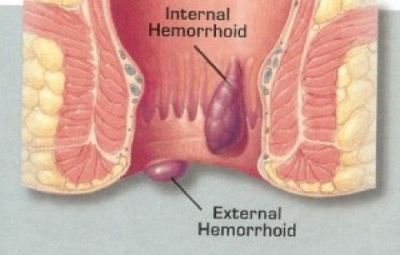Home » Men's Health »
Internal Piles Or External Piles: The Difference Explained
Piles fall into two types, internal and external. Internal piles occur where the anal tissue becomes inflamed inside of the rectum. External piles occur when the soft tissue on the outside of the anus becomes inflamed.
As they are found outside of the anus, the sacs of blood filled tissue are visible and easily felt, making diagnosis and treatment of external piles easier.
The first sign of external piles is usually discomfort. The piles are usually very tender and itchy. There may also be some bright red blood to be seen on the toilet paper after wiping. Both sitting and walking can be very painful with external piles.
– External hemorrhoids tend to be the easiest to treat as they can often be relieved with home remedies, such as creams, wipes, warm baths and meticulous hygiene. It is possible for external piles to disappear within a few weeks. This can however seem a very long time for anyone suffering the discomfort that piles can bring!
– Internal piles quite often don’t cause pain and the first sign may be only noticed when blood is seen either on the toilet paper or on a stool. Another sign can be an unpleasant watery discharge from the anus. This is often distressing and embarrassing for the sufferer. Sometimes there is also a persistent feeling of needing to open the bowels.
Some internal piles are accompanied by pain and this happens when they prolapse out of the anus, usually when a bowel movement is being performed. As they are located inside, treatment with creams isn’t effective although wipes and baths are still advised for hygiene purposes especially where there is a discharge of water or mucous. Discharge of mucous can cause severe irritation of the rectal area.
Sometimes piles that prolapse out of the anus in this way will retract back inside once the stool has been passed. Others remain outside and these can be extremely painful. In this case it is worth trying a cold compress to shrink the tissues and then carefully pushing the pile back into the anus, using a finger. This is painful to do, but will give relief if the prolapsed pile remains inside.
Should the pile not retract and not be able to be pushed back, it is possible that a clot may have formed within the blood. When this type of pile remains outside of the body, the blood supply can be cut off forming what is known as a strangulated pile. The pain from strangulated piles is usually excruciating.






0 Comments
You can be the first one to leave a comment.